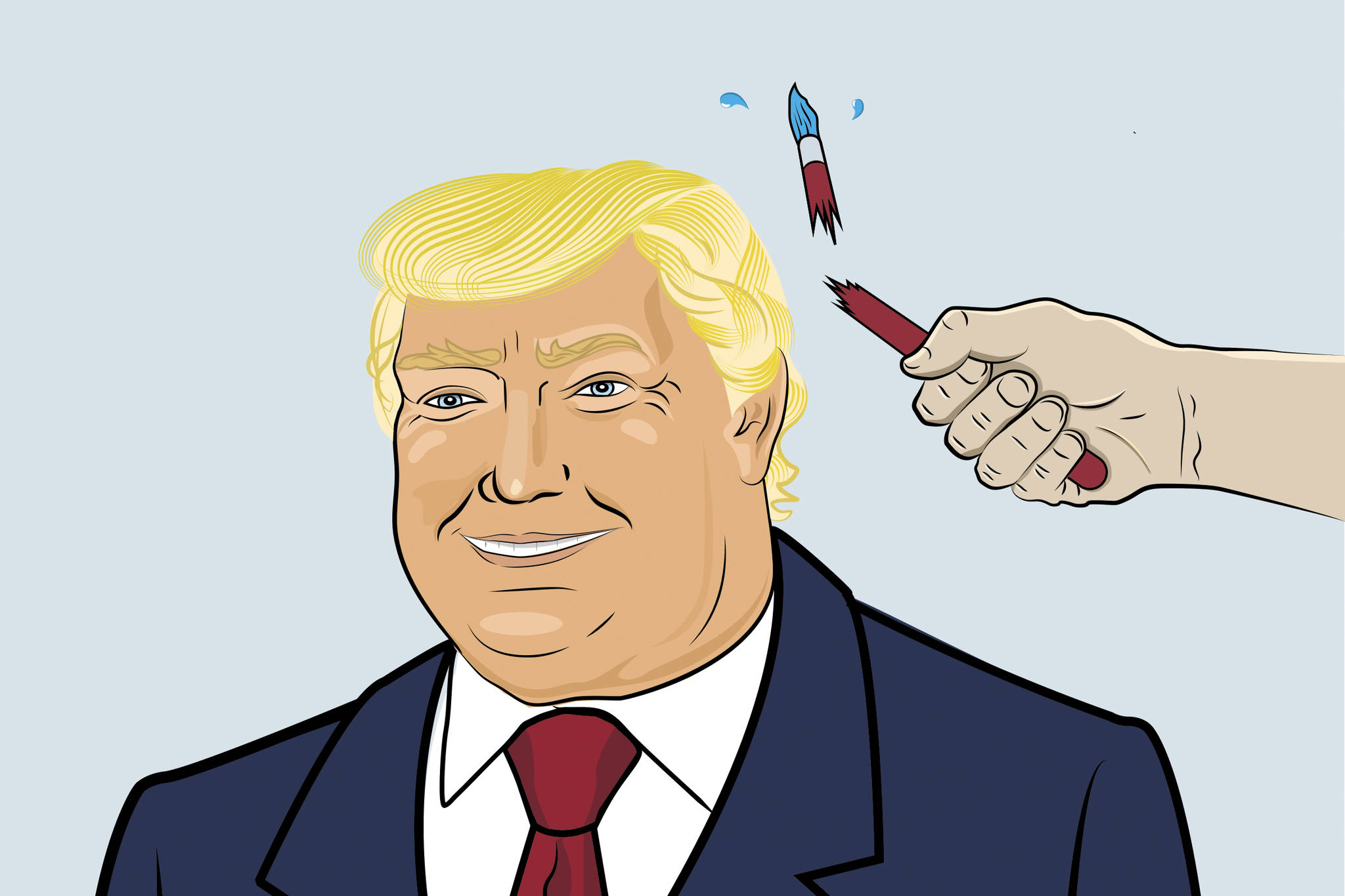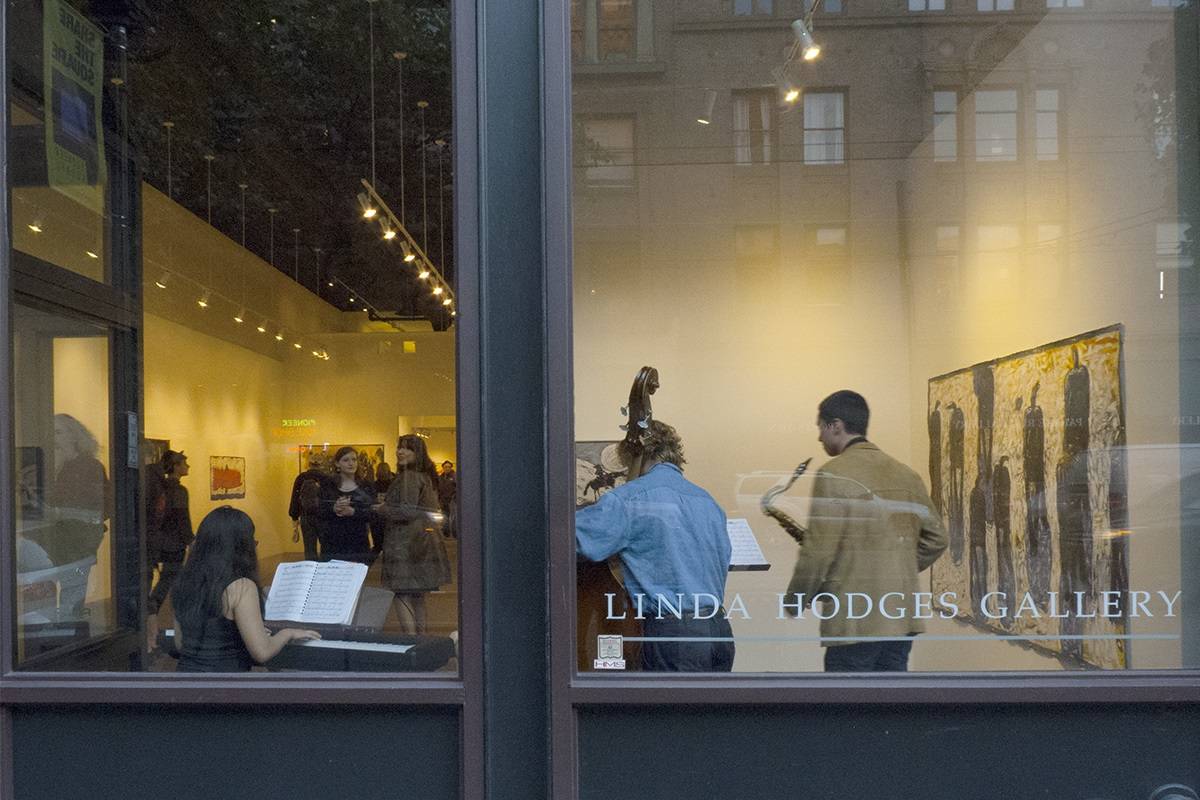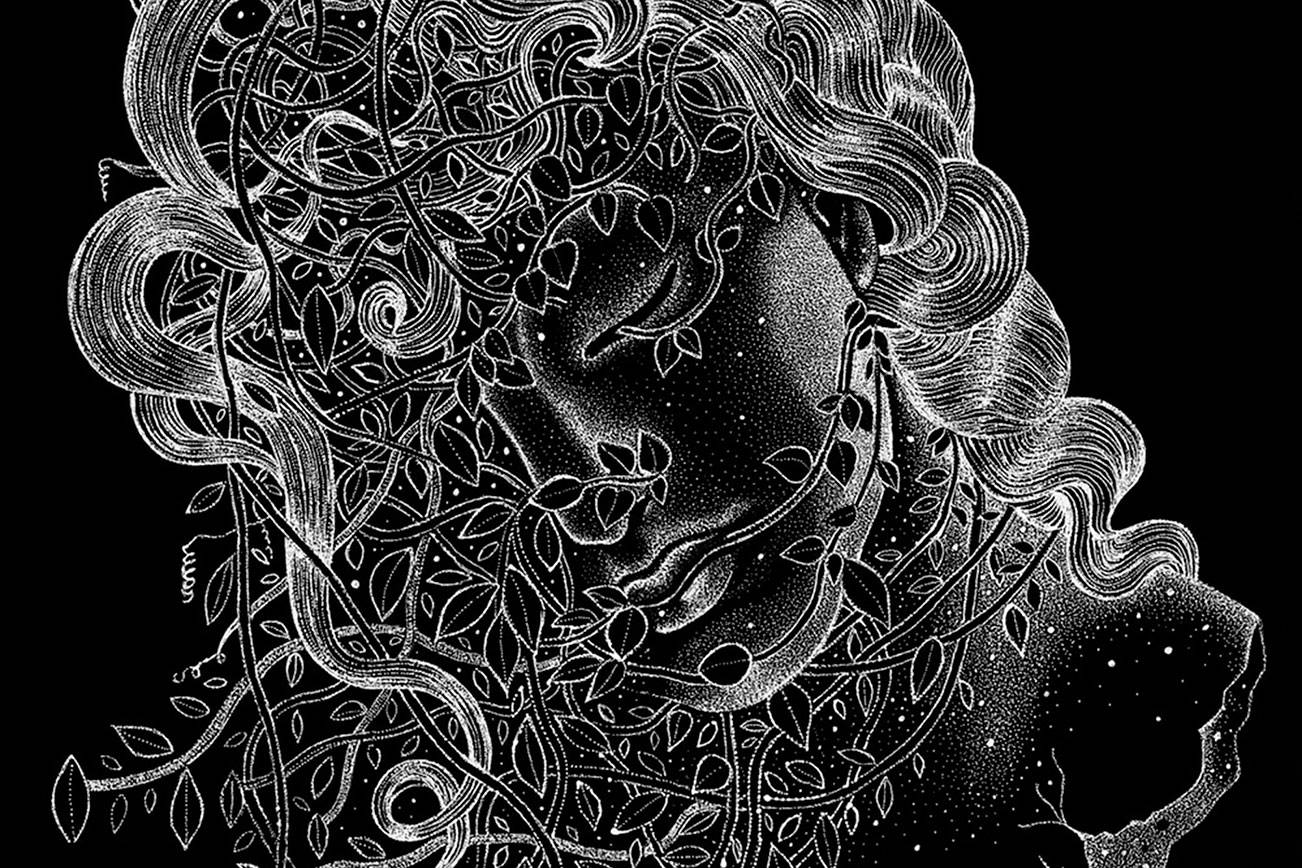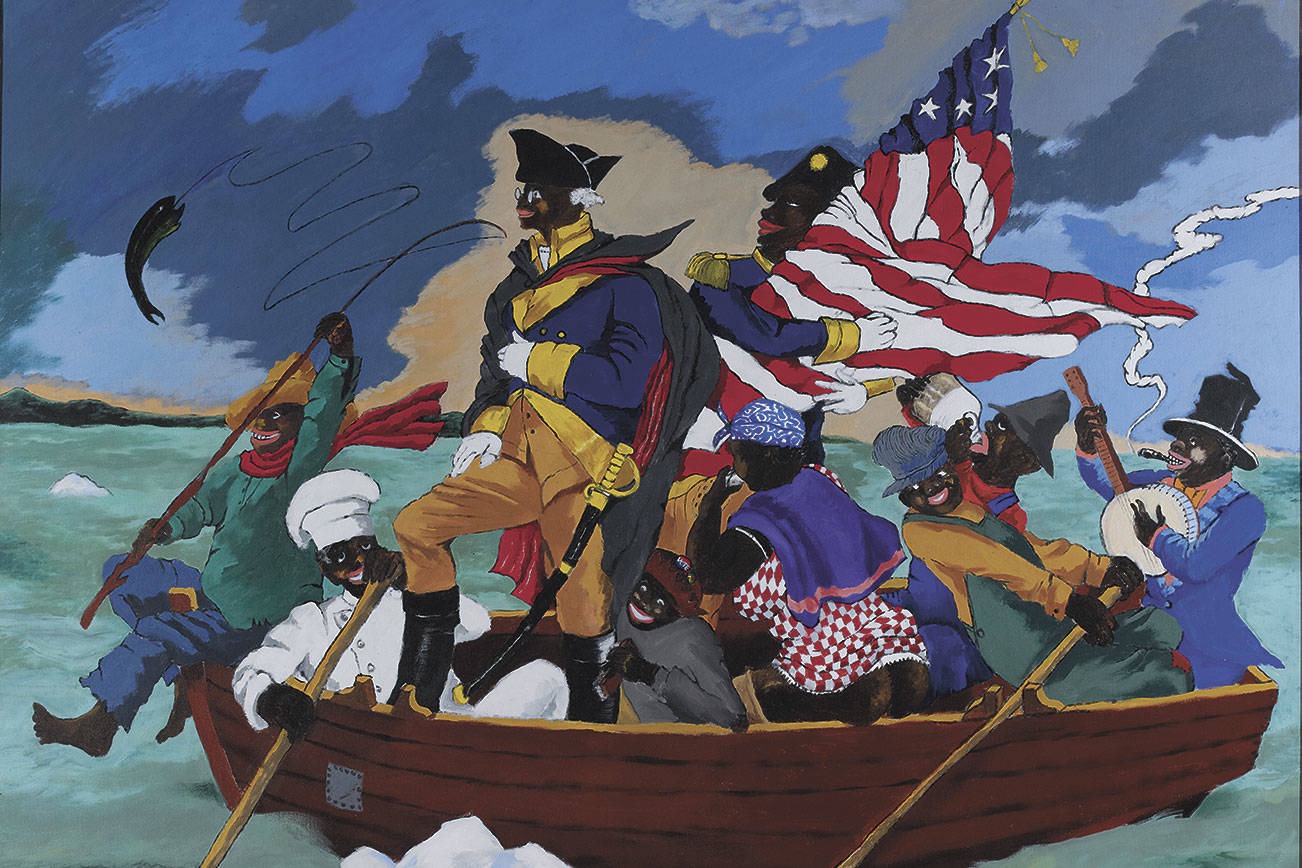In the weeks that followed the election, some commentators asserted that art would need to “get serious” to combat Trumpism. As defiant as these assertions may be toward the ruling party, they defy reality far more.
There is plenty of strong, serious artwork out there, but in terms of visual art that explicitly speaks truth to power, nothing shown locally since the night of Nov. 9 has cut past political theater and gone straight for the big, troubling, existential questions at the heart of power itself. Even worse, a lot of the protest art being made is just an extension of the pettiest online bickering, sometimes quite literally. One offender is on display at the front of BONFIRE Gallery. Anyone remember that vaguely amusing “Trump Sandwich” meme passed around before the election? “White bread, full of baloney, with Russian dressing and a small pickle?” Well, now you can see it rendered in cartoonish clay and felt.
It’s part of the show ARTRUMPS, which is dominated by unflattering caricatures of the President, and one of Steve Bannon, too. The more insightful pieces get a bit lost in the fray, but it is worth seeing as a microcosm of how activist art and dialectics are failing. Lest our failings get lost in the fray too, let’s get specific:
Activism Is Not Altruism A lot of protest art implies the inherent heroism of its movement, creates a rallying point, and leads participants to seek personal power through collective action. The opposition is demonized, and dissent (or even nuance) among the dissenters becomes less than heroic. In essence, such work states that one’s agency is legitimized only through its own political framework. Let us not call these objects “protest art.” Let’s call them what they are: propaganda.
Propaganda Is Not Art Among creators, visual artists have the hardest task when it comes to making a work of protest that doesn’t resort to pettiness or simplified didactics. Performers, by contrast, have time to create a narrative, which can be timeless and invite complex reactions. But a still image has one shot to show a narrative rather than tell its conclusion. Rare is the visual artwork that protests a specific event, yet is universal and timeless. Picasso’s Guernica is a most recognizable example, but even it was helped to this status by the painting’s scale and the artist’s fame.
A lot of artists feel compelled to make something in response to the Trump regime, but they resort to modes of propaganda and talking points. The resulting works are beneath their talents. Two examples at ARTRUMPS: Buster Simpson’s two large mixed-media sculptures and Casey Curran’s marching Mr. Cheetos. At least Simpson’s garish columnar reference to Japanese internment makes sense in BONFIRE’s home in the Panama Hotel, a living museum of the legacy of internment. But his dopey bust in the front will make you squint before you read the tag, then roll your eyes after. Curran’s work makes something quite dull (but fortunately ephemeral) of his skill as a kinetic artist. One might say that its marching orange stickmen illustrate the next item here, but it does nothing to mitigate the problem.
Trumpism Is a Cult Trump’s campaign harnessed a national penchant for cults, revolution, and angry populism, and a lot of protest art underestimates how this now manifests in the administration. Not everyone who voted for Trump or attends his rallies is a Trumpist, but each of them could be. If the resistance resorts to little more than ad hominem attacks on both the figurehead and the followers, the more likely his voters will become Trumpists. That is, if the resistance is as petulant and childish as its target, the one with the office and status will win over the status quo by default. The majority of Americans would rather not align with a movement whose raison d’etre seems to be resistance for its own sake. It has to be for the sake of others. The emptiness of Trumpism will be revealed if artists spend more time humanizing and elevating the intended victims of his policies rather than scoring points against his ego.
Realpolitik Is Local Despite its status as a self-proclaimed Sanctuary City, Seattle is not a visionary model of municipal munificence. On the contrary: The city’s legacy of racist redlining, density-averse NIMBYism, developer-coddling councils, and disregard for poor and minority populations have led to homelessness, gentrification, and regressive taxation that have made it increasingly unwelcoming to its own residents, let alone refugees. A lot of wealth is increasingly centralized in Sanctuary Cities, but if the populace cannot address plutocracy and a lack of equity in its backyard, what hope is there in the other Washington?
Making art in earnest about the past, present, and future locally is critical. A work referencing the sale and demolition of Yesler Terrace by Romson Bustillo was a breath of fresh air at ARTRUMPS. As for refugees, Horatio Law’s Burnt Offerings shows a grid of portraits of Syrian children that is affecting, but also troubling amid the crass caricatures of Trump around it; the context inspires more resentment than compassion. This is not the fault of the work, but of the show’s format, which wasn’t curated so much as placed to fit. Fittingly, the work across the gallery from the Syrian children illustrates this final item.
Art Has No Authority CT Chew’s New Alphabet Chart shows a grid of letters (and other symbols) presented in no cogent order, each with a word and an unrelated image behind it. It was made in response to the administration of “alternative facts,” but it could have been made 50 years ago, when postmodern philosophers embraced relativism and absurdist artists embraced them in turn. For half a century, Foucault, Derrida, and others formed a playbook to undermine the longstanding patriarchy’s specious claims to authority. Unfortunately, this playbook can just as easily be adopted by philistines and tyrants. Now, the mental gymnastics that were at least amusing in the ivory tower are bone-chilling in the White House. The ivory tower, after all, doesn’t have nuclear codes.
The art world’s complicity with the madness does not end here by any means. This sort of high-concept obfuscation has become central to the commodification of art, which at the highest levels is just another speculative investment. Do not expect the darlings of the art market to speak truth to power anytime soon.
Art is not the art market, though. Art has the potential to express humanity’s highest ideals. Art is what can rejuvenate one for the fight and remind one of what one is fighting for. If it protests, it is effective to the extent that it reminds us of our highest aspirations, not how much we resent our current condition or those we blame for it.
Still, I expect to see many great new works in years to come. They won’t be railing against Trumpism. They’ll be talking about our shared humanity, which—by virtue of being everything that Trumpism lacks—will be the greatest protest of all.
ARTRUMPS, BONFIRE, 603 Main St., thisisbonfire.com. Free. All ages. Ends June 3. visualarts@seattleweekly.com








